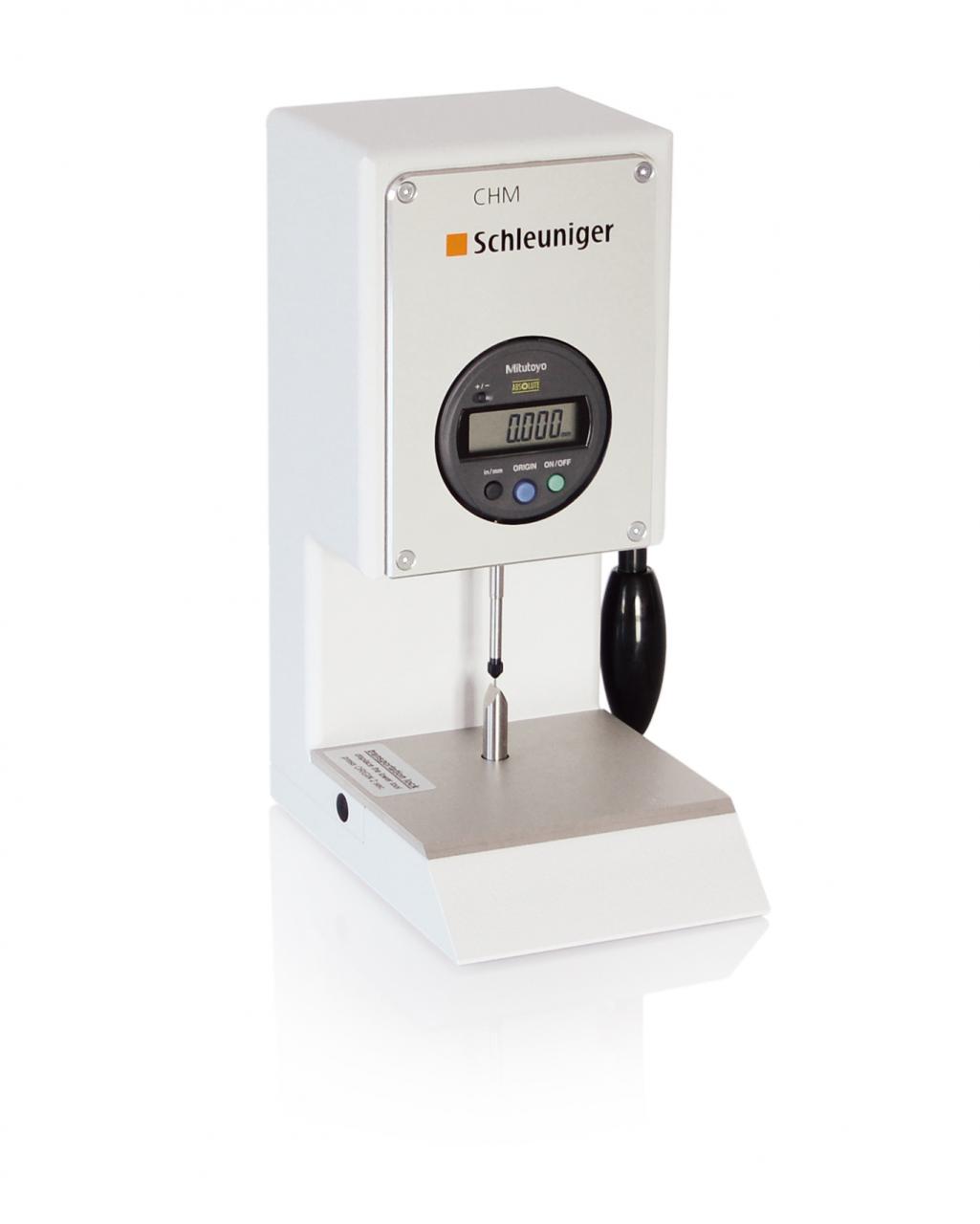CHM
Crimp-Height Measuring Device
Overview
The Schleuniger CHM crimp-height measurement system distinguishes itself from conventional handheld units by its ease of measuring. The measurement process is much less cumbersome than handheld units, thereby significantly reducing the time required to take the measurement. The operator can use both hands to hold the terminal in position in the lighted work area. This ensures that the terminal is positioned properly in the micrometer. The spring-loaded measuring pin ensures consistent pressure on the terminal, significantly improving consistency between operators.
- Pin & blade measuring points
- Easier terminal positioning
- Consistent measuring force
- Improved reliability and repeatability
Application Range
The CHM device is most commonly used for crimp-height measurement on standard, noninsulated, crimp terminals. Most commonly used for B-style crimps, but others may be possible.
Technical Data
| Gauge | Standard: Mitutoyo Digimatic, Optional: Sylvac |
| Resolution | Standard: 0.01 mm (0.0004”) |
| Power Supply | 110/220 VAC |
| Dimensions (L x W x H) | 155 x 125 x 233 mm (6.1 x 4.9 x 9.2”) |
| CE Conformity | The CHM fully complies with all CE and EMC equipment guidelines relative to mechanical and electrical safety and electromagnetic compatibility. |
| Important Note | Schleuniger recommends that wire samples be submitted in case where there is doubt as to the processing capabilities of a particular machine. |
More Info
Function
The standard measuring contacts on the CHM are the point-and-blade combination designed specifically for measuring crimp height. The lever on the side raises the top pin allowing the operator to insert the sample. When the operator lowers the lever, the spring-loaded pin drops to make contact with the sample. The operator is then free to adjust the sample as needed for the most accurate measurement. By using the CHM, your crimp-height testing process will become more efficient, reducing the amount of time required for collecting test data. Furthermore, the spring-loaded pin encourages measurement results to be more consistent between operators.


